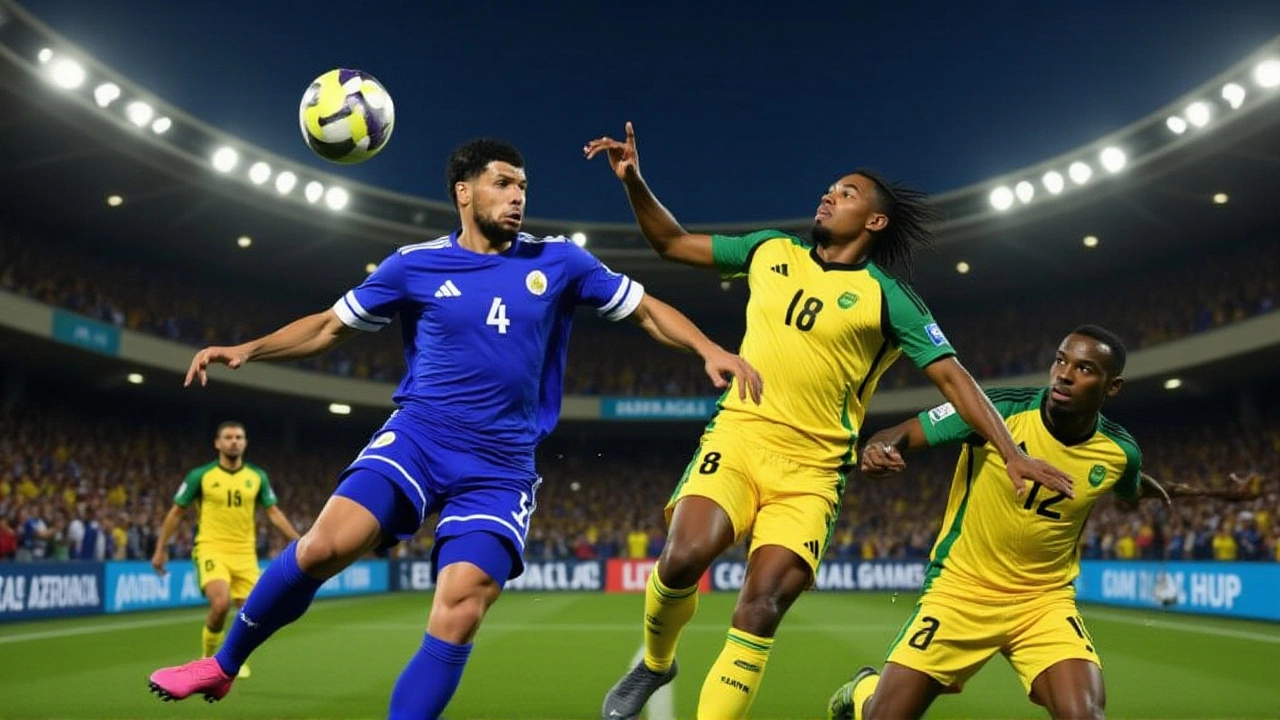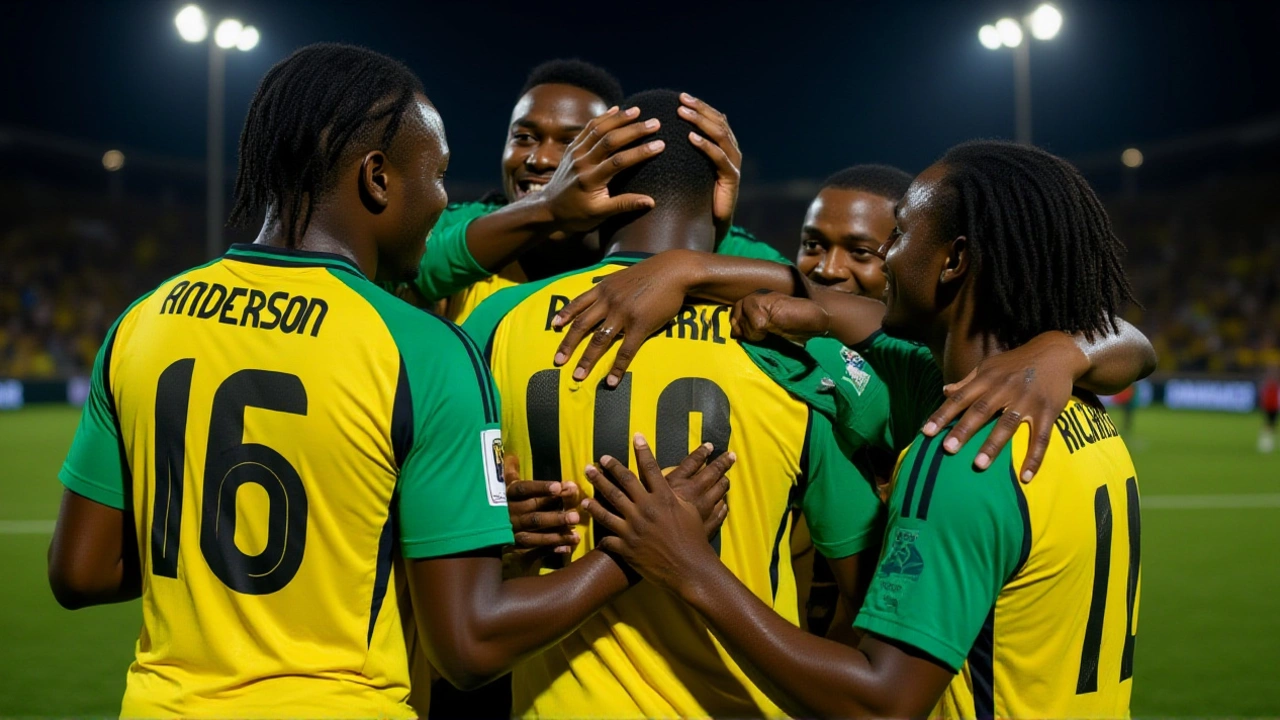On November 19, 2025, a quiet island nation with fewer people than many U.S. high schools stunned the football world. Curaçao held Jamaica to a 0-0 draw at National Stadium in Kingston, securing direct qualification for the 2026 FIFA World CupCanada, Mexico, and the United States—their first ever. The final whistle didn’t just end a match. It launched a blue wave across the globe. With a population of just 165,000, Curaçao became the smallest nation in history to reach a World Cup finals, eclipsing Iceland’s 2018 record. And they did it without scoring a single goal in the decisive game.
How a Draw Became a Triumph
It wasn’t pretty. It wasn’t even close to being dominant. But in football, sometimes the most beautiful moments are the ones you survive. Curaçao entered the match needing only a draw to top Group B. Jamaica, desperate to avoid the playoff path, threw everything at them. Greg Leigh, the Manchester City defender, headed a powerful chance off the right post in the 54th minute. Moments later, Jürgen Locadia—Curaçao’s 31-year-old forward for FC Cincinnati—broke free and fired low, only for Andre Blake, Jamaica’s veteran goalkeeper, to palm it away with a fingertip save. The woodwork became a recurring character. Shamar Nicholson’s 70th-minute header rattled the crossbar. Bailey Cadamarteri’s 87th-minute strike hit the post. Twice. Three times, Jamaica came within inches of victory. And still, Curaçao held.
The tension peaked in the 87th minute when John Russell, Jamaica’s Birmingham City defender, collected his second yellow card. Suddenly, the Reggae Boyz were down to 10 men. With seconds left, Blake even ventured forward for a corner, leaving his net empty. It was a last-ditch gamble—and it failed. The final whistle blew. The stadium fell silent. Then, in the stands, a single blue scarf unfurled. Then another. Then a sea of them.
Group B: The Tightest Race in Concacaf History
The road to this moment was paved with grit. Curaçao had already beaten Jamaica 2-0 on October 10, 2025, in Willemstad, a result that gave them momentum and psychological advantage. Their group stage record: 2 wins, 1 draw, 0 losses. Seven points. Jamaica, despite winning two games, lost that crucial away match and finished with six. Trinidad and Tobago hovered at nine points, but couldn’t catch either. Bermuda? They were outclassed, winless, and outscored 20-0. The group wasn’t just competitive—it was brutal. Every point mattered. Every tackle, every save, every missed chance carried the weight of a nation’s dream.
What made Curaçao’s run so remarkable? They didn’t have star power. No Premier League icons. No MLS superstars. Just a squad built from Dutch academy graduates, Caribbean-born talents, and players from Belgium’s lower leagues. Jayden Candelaria, Riechedly Bazoer, Leandro Merencia—they weren’t household names. But they played like warriors. And they had something Jamaica didn’t: belief.

Why This Matters Beyond the Pitch
For a Caribbean island that’s never qualified for a World Cup before, this isn’t just about football. It’s about identity. Curaçao, a constituent country of the Kingdom of the Netherlands, has long lived in the shadow of its larger neighbor. Its national team has been called “the forgotten team.” But on November 19, 2025, the world watched as a nation of 165,000 outlasted a country of 2.8 million. Iceland’s 2018 run was historic. But Curaçao’s is more improbable. More poetic. More human.
“A blue wave is heading to the World Cup,” said the CBS Sports commentator as the final whistle blew. That phrase stuck. Because it wasn’t just a team. It was a movement. A community. A thousand kids on dusty pitches in Willemstad, watching on cracked phones, suddenly seeing themselves in a World Cup jersey.
What Comes Next?
Curaçao will be drawn into one of the eight groups at the 2026 World Cup, which kicks off on June 11, 2026, across Canada, Mexico, and the United States. They’ll face giants—Brazil, Spain, Germany, whoever the draw throws at them. But they won’t be underdogs in the traditional sense. They’ll be pioneers. The smallest nation ever to make it. And they’ve already proven they belong.
For Jamaica, the road isn’t over. They’ll enter the intercontinental playoff in March 2026, facing teams from Asia, Africa, or Oceania for one final spot. But for now, Kingston’s silence speaks louder than any cheer ever could.

Behind the Numbers: The Making of a Miracle
- Population: Curaçao (165,000) vs. Jamaica (2.8 million) — a 17:1 ratio
- Group B Final Standings: Curaçao (7 pts), Jamaica (6 pts), Trinidad and Tobago (5 pts), Bermuda (0 pts)
- Key Saves: Andre Blake (Jamaica) made 4 crucial stops in the match
- Woodwork Hits: Jamaica struck the post or crossbar four times
- Historical Precedent: Before Curaçao, Iceland (340,000) was the smallest nation to qualify (2018)
The match wasn’t decided by talent alone. It was decided by resilience. By organization. By a team that refused to believe they were too small to dream.
Frequently Asked Questions
How did Curaçao manage to qualify with only seven points?
Curaçao won two matches and drew one in the final Concacaf round, finishing with seven points—just one ahead of Jamaica. Their 2-0 victory over Jamaica in October gave them the head-to-head advantage, which became decisive when both teams ended with identical goal differences. The win in Willemstad was the foundation; the draw in Kingston was the exclamation point.
Who are the key players behind Curaçao’s success?
While no single star dominated, goalkeeper Kevin Felida made critical saves, midfielders Riechedly Bazoer and Leandro Merencia controlled tempo, and forward Jürgen Locadia created chances despite being tightly marked. But it was the collective discipline—defending deep, absorbing pressure, and never panicking—that defined them. They didn’t need a Messi. They needed a team.
Why is this considered more impressive than Iceland’s 2018 qualification?
Iceland’s population of 340,000 was already a record-breaker. But Curaçao’s population is less than half that—smaller than many U.S. college towns. They didn’t have a national league system like Iceland’s. They didn’t have state funding for youth academies. Their success came from diaspora talent, grassroots passion, and sheer will. It’s David with a slingshot made of seaweed.
What does this mean for Caribbean football?
Curaçao’s qualification proves that size doesn’t determine potential. It’s a blueprint for other small Caribbean nations—Haiti, Suriname, the Dominican Republic. If Curaçao can do it, so can they. Expect increased investment in youth academies, more diaspora recruitment, and renewed pride across the region. The Caribbean isn’t just a football footnote anymore.
What’s next for Jamaica after this heartbreak?
Jamaica will enter the FIFA intercontinental playoff in March 2026, likely facing a team from Asia or Africa. Their path to Qatar 2022 was emotional; this time, the pressure is even greater. They’ll need to fix their finishing—four woodwork hits in one match isn’t luck, it’s a crisis. But with Andre Blake still in goal and a new generation emerging, redemption is still possible.
Where will Curaçao play their World Cup matches?
The 2026 World Cup will be hosted across 16 cities in Canada, Mexico, and the United States. Curaçao’s group stage matches could be in cities like Dallas, Monterrey, or Toronto—anywhere with a large Caribbean diaspora. Expect packed stands of blue, with families flying in from Amsterdam, Miami, and Rotterdam to cheer for the smallest nation on the planet.
